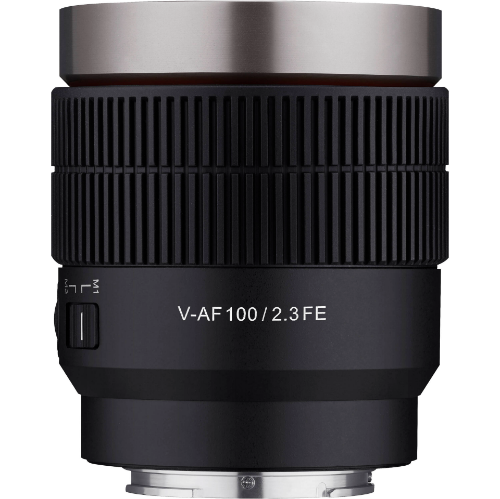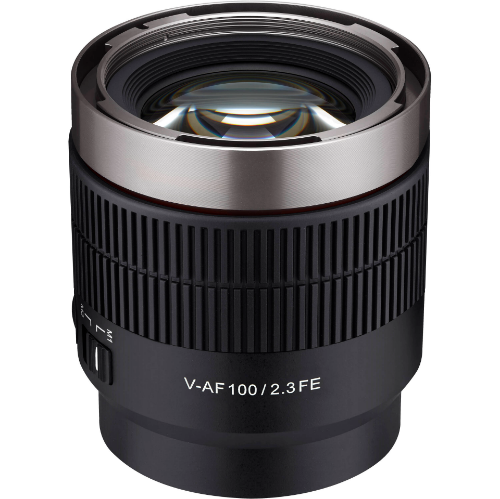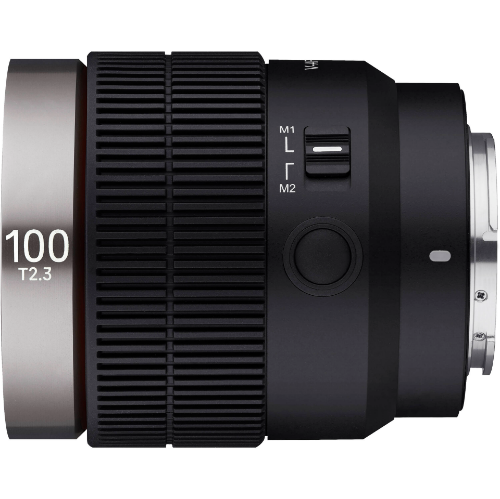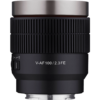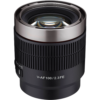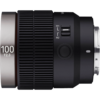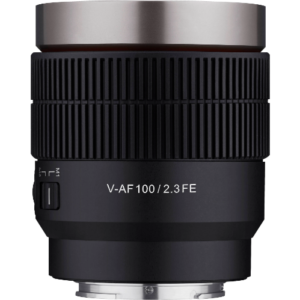SAMYANG V-AF 100MM T2.3 FE FOR SONY E VIDEO LENS
HIGHLIGHTS
100mm T2.3 Cinema Lens with Autofocus
Supports Sensors up to 8K
Compact & Lightweight for Gimbals/Drones
LED Tally Lamp on Front
₹42,490.00 ₹50,990.00
Best Buy ₹41,640.20
Free Shipping across India
Have a question? Ask Us Chat | Email | Call
SAMYANG V-AF 100MM T2.3 FE FOR SONY E VIDEO LENS
Add an ultralightweight, ultracompact cinema lens to your kit with the V-AF 100mm T2.3 FE Lens from Samyang. The lens has a Sony E-mount and covers up to 8K full-frame sensors, and it features a multicoating to protect the lens from glare and a 9-blade iris that provides a soft, natural bokeh and dramatic cinema look. Its autofocus function makes focusing easy when using the lens on a gimbal rig or a drone, and it features a switch that can save your focus settings when switching between manual and autofocus. The lens also features a tally LED on the front that allows you to see whether the camera is recording using its electronic contacts.
This 100mm lens produces a 25.4° angle of view when used with full-frame cameras, the front accepts a 58mm filter, and it has a minimum focus distance of 2.3′ from the lens. The 100mm lens has the same form factor as other lenses in the Cine AF line, making them easy to swap out without reconfiguring your rig.
Compact and Light
The Cine AF increases compatibility with gimbals and drones by applying the unified form factors with its five different focal lengths (ultra-wide to medium-tele). By providing a compact size and a light weight, there is no need to re-set the equipment when changing the lenses.
Tally Lamp
The lamp located on the front and mount index helps the user check whether a video is recorded or not while shooting. It supports video content creation more conveniently, even in a small space without a lot of equipment.
8K Support
The new Cine AF series supports resolutions up to 8K in a small and lightweight form, which is well suited for use with handheld gimbals and drones, as well as for studios and location productions.
Color Matching
All lenses within the new Cine AF series are color-matched to avoid shifts when swapping lenses, and the nine aperture blades allow for a natural-looking bokeh.
Custom Focus Switch and Button
Features the ‘Focus save’ function usually in professional cine equipment, and custom mode that adds function by firmware, which provides video-specific functions.
| Brands | Samyang |
|---|
SAMYANG V-AF 100MM T2.3 FE FOR SONY E VIDEO LENS SPECIFICATIONS
|
Focal Length |
100mm |
|
Maximum Aperture |
T2.3 |
|
Lens Mount |
Sony E |
|
Lens Format Coverage |
Full Frame |
|
Filter Thread |
58 mm |
|
Image Stabilization |
No |
|
Electronic Communication |
Yes |
|
Maximum Aperture |
T2.3 |
|
Lens Mount |
Sony E |
|
Interchangeable Mount |
No |
|
Lens Format Coverage |
Full Frame |
|
Image Circle |
43.3 mm |
|
Angle of View |
Not Specified by Manufacturer |
|
Filter Thread |
58 mm |
|
Minimum Focus Distance |
From Unspecified Point in Lens: 2.3′ / 0.7 m |
|
Maximum Magnification Ratio |
Not Specified by Manufacturer |
|
Diaphragm Blades |
9 |
|
Image Stabilization |
No |
|
Gear Standard |
Not Specified by Manufacturer |
|
Gear Rotation |
Iris 300° |
|
Electronic Communication |
Yes |
|
Coatings |
Multi-Coating |
|
Diameter |
Front: 2.8″ / 70 mm |
|
Length |
3.4″ / 85.3 mm |
|
Weight |
9.6 oz / 272 g |
Shipping Policy
- Free Shipping
- No shipping charges throughout India.
- We deliver throughout India, Monday-Saturdays, excluding India Public holidays.
- We would dispatch the order in 1-2 working days and it should reach to you in minimum 4 days and maximum in 8 working days
- If there is any delay or if the customer has any quarries relating to shipment they can reach to us on 9356372991.

